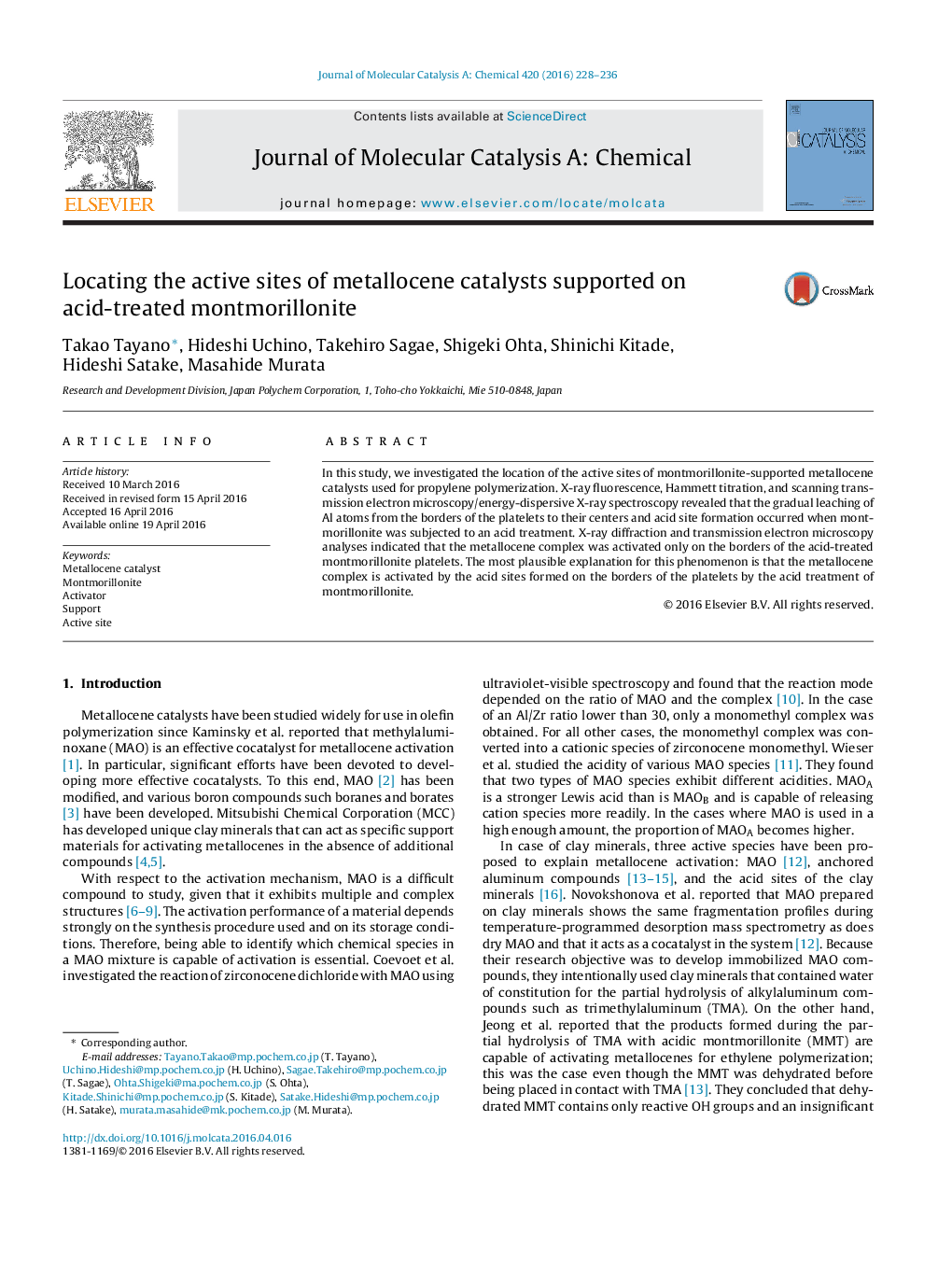| Article ID | Journal | Published Year | Pages | File Type |
|---|---|---|---|---|
| 64597 | Journal of Molecular Catalysis A: Chemical | 2016 | 9 Pages |
•At MMT platelet border, acid sites were formed by H2SO4 treatment.•XRD indicated that metallocene was not intercalated into acid-treated MMT.•EFTEM showed that propylene was polymerized at the border.•Metallocene was supported and activated at the border (not interlayer).
In this study, we investigated the location of the active sites of montmorillonite-supported metallocene catalysts used for propylene polymerization. X-ray fluorescence, Hammett titration, and scanning transmission electron microscopy/energy-dispersive X-ray spectroscopy revealed that the gradual leaching of Al atoms from the borders of the platelets to their centers and acid site formation occurred when montmorillonite was subjected to an acid treatment. X-ray diffraction and transmission electron microscopy analyses indicated that the metallocene complex was activated only on the borders of the acid-treated montmorillonite platelets. The most plausible explanation for this phenomenon is that the metallocene complex is activated by the acid sites formed on the borders of the platelets by the acid treatment of montmorillonite.
Graphical abstractFigure optionsDownload full-size imageDownload high-quality image (187 K)Download as PowerPoint slide
